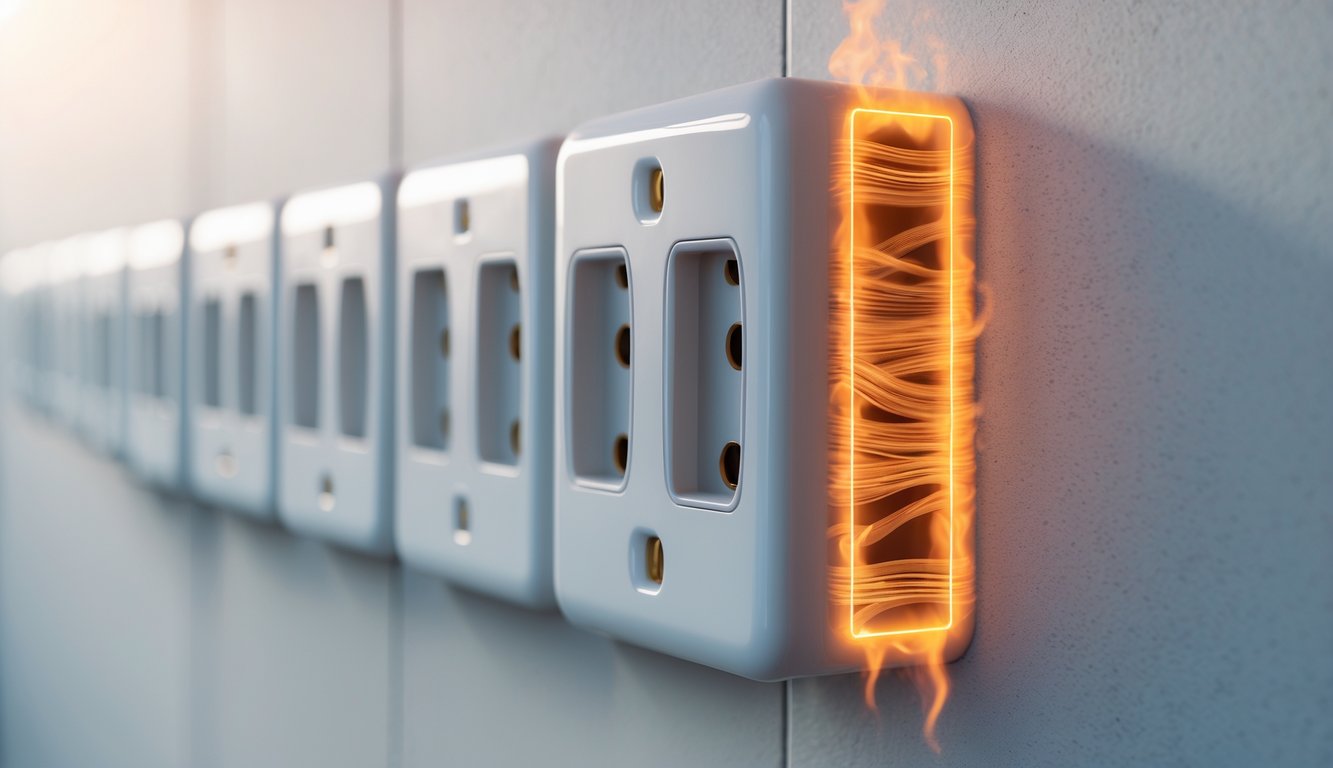
Proper Use of Surge Protectors
I used to think surge protectors were just power strips with a fancy name, so why not plug everything in? Turns out, overloading is very much a thing. Surge protectors handle voltage spikes, not your entire home theater plus a bread maker from 1982. The Consumer Product Safety Commission—yeah, those folks—say electrical distribution equipment (including cheap surge strips) is a top-five fire starter.
UL-listed or bust. If a surge protector feels like a dollar-store toy, skip it. Actually read the labels—amperage, joule ratings, all that. Most people don’t realize you can get whole-house surge protection (not just those $15 strips), and if you live somewhere with wild storms, it’s worth it. Also, don’t plug a surge protector into another one. Seriously, that’s not “double safe.” It’s double dumb, according to outlet safety guidelines. Every time I see a chain of surge protectors, I picture a bag of microwaved popcorn catching fire on livestream. Just… don’t.
Who to Call: Licensed and Qualified Electricians
My neighbor once tried to swap out her own outlets—tripped the breakers, killed her kitchen lights for days, and finally admitted she lost a wire somewhere. DIY with YouTube and a toddler in the next room? Hard pass. You want your home safe, not starring in a viral fail video.
When to Call an Electrician
I ignored a warm outlet once—until the wall itself started heating up at night. Nothing plugged in, no space heater. Not normal. If an outlet feels warm, looks discolored, or throws sparks when you unplug something, don’t wait. That weird “hot plastic” smell? Huge warning sign.
The National Fire Protection Association says faulty wiring causes a ton of house fires. If your breakers trip every time you vacuum or your lights flicker when you use the microwave, just call an electrician. The pros I’ve talked to say it’s rarely just the outlet—usually it’s loose wires or overloaded circuits hiding in the walls.
And please, don’t call your brother-in-law because he “knows a guy.” Licensed pros have insurance, tools, and, you know, actual training. You don’t want to gamble on invisible problems when a real electrician can find a short before you’re paying for a whole new panel.
Choosing a Professional for Electrical Repairs
I’ve heard too many stories about hiring “the cheap guy.” My friend picked a random “expert” off Craigslist and ended up with half her house ungrounded. Not every “electrician” with a van counts—most states make you pass real exams and keep up with code.
Ask for a license. Seriously, don’t just trust a sticker on their truck. Good electricians show their paperwork, give references, and break down their quotes (parts, labor, permits—all of it). The big franchises—Mister Sparky, ServiceWise—do detailed diagnostics and won’t touch a thing until you know what’s wrong. There’s a reason for that.
If someone tells you to rewire your whole house because of one hot outlet, get a second opinion. Sometimes it’s just a loose wire. I’d rather have someone explain the problem than act like a hero. More on overheating risks at Why Is My Outlet Warm? and What Causes Electrical Outlets to Overheat?. Credentials and actual documentation matter. Don’t settle for guesswork.
How to Prevent Overheating Outlets at Home
I never trust those $5 power strips labeled “heavy-duty.” They last about as long as the popcorn smell after an outlet burns. It’s all about three things: regular checks, decent tools, and tossing anything that’s sketchy or ancient. Skip one and you’ll regret it.
Routine Electrical Inspections and Testing
Ignoring wall sockets after you move in? Not smart. The National Fire Protection Association says faulty wiring causes over 45,000 home fires every year. My neighbor’s winter heater nearly melted her living room outlet because nobody checked her wiring for years. Booking a certified electrician for regular inspections isn’t fun, but it’s the only way to find problems you can’t see: frayed wires, old breaker panels, bad grounds.
Last time I had a pro in, he found corrosion behind an outlet that looked totally fine. No buzzing, no warning. Most older homes never got arc-fault breakers, so even a light switch can hide nasty surprises. Skipping inspections is like skipping the dentist: you’re fine until you’re not.
Inspecting Outlets With a Voltage Tester
Ever stand in a hardware aisle debating which voltage tester won’t get you zapped? I have. Using a Klein Tools voltage tester changed everything for me. It’s a little nerve-wracking—stick the probe in, hope for the best—but it’s simple: check for weird voltage, flickering, or “hot neutral” backfeeds (don’t Google that at midnight).
Not all testers are equal. Cheap ones missed live faults more than once. The GFCI checker with a digital display caught outlets heating up before I smelled anything. Electricians say test every three months, or any time you move heavy stuff. I keep a chart under my fuse box, but it’s next to my old concert tickets, so, you know, priorities.
Replacing Outdated or Damaged Outlets
I once tried to prop up a loose outlet with cardboard (don’t do this), and ended up melting the plug. Modern tamper-resistant outlets aren’t just for kids—they clamp tighter and don’t arc as easily. Worth it if you’re still using those crumbly ivory ones from the ‘70s.
Any spark, crackle, or browning? Replace it. Swapping out dead or ungrounded outlets is cheap insurance. No idea why people hesitate—I’ve done ten this year just moving lamps for family. Kitchens and baths? GFCI or bust. Moisture and electricity are a nightmare combo. Found a warning sign and prevention list here if you’re feeling paranoid and want to check every socket at 2 a.m.